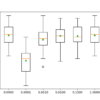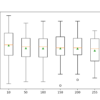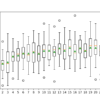Semi-supervised learning refers to algorithms that attempt to make use of both labeled and unlabeled training data. Semi-supervised learning algorithms are unlike supervised learning algorithms that are only able to learn from labeled training data. A popular approach to semi-supervised learning is to create a graph that connects examples in the training dataset and propagates […]










